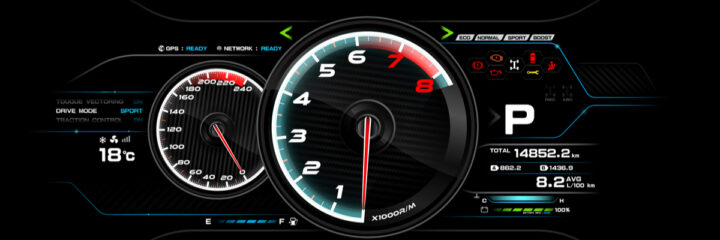Idling means your engine is running when your car is stationary. When idling, the engine runs with no load except the engine components. The idle speed refers to the rotational speed (RPM) the engine runs on when the engine is disconnected from the drivetrain and your car is not in motion. The drivetrain connects the engine to the wheels, essentially providing an outlet for all that power the engine is churning out to put the vehicle in motion. The drivetrain could be front wheels, rear wheels, or all-wheel drive.
The idle speed is controlled by the Idle Speed Control Motor (ISC). The Idle Speed Control Motor is controlled by a computer through the throttle body motor assembly. The computer moves the throttle plate until the engine gets to the required RPM. This RPM keeps the engine from stalling while idling, and it usually ranges from 600rpm to 1,000rpm.
When your engine is idling, the idle air control valve controls the idling of the engine by allowing the mixing of air with fuel. During this air-to-fuel mixture, vapor is created and burnt in the combustion chamber. When the idle control valve fails or starts having issues, it will affect the idle speed as well. High idling after cleaning the throttle body could be caused by any of the factors below:
- The computer is yet to reset the idle after cleaning the throttle body motor assembly. To take care of this, you will have to relearn the system. Put your vehicle in drive for about 2 to 3 minutes with all engine components off and allow the idle to come down. Then leave your A/C with the blower on for 3 minutes at a very high level. This should help reset the idle.
- There is still debris in the throttle body preventing the throttle plate from moving smoothly. In this case, the throttle body wasn’t cleaned properly. It is best to have the throttle body removed to properly clean the front and rear.
- There is a vacuum leak from a torn hose. This is the case if you find your car makes loud noises while idling at a high speed. A vacuum leak will cause too much air to enter the throttle body. Too much air in the air-to-fuel mixture will increase the combustibility of the mixture resulting in a high idle. You will need to take your car back to the mechanic to take care of this issue.
- If the air intake tube is not reinstalled properly after cleaning the throttle body, it will allow excess air to enter the engine causing a high idle. For this as well, you will have to take the car to a qualified automobile technician to investigate and fix the problem.
- The throttle position sensor (TPS) is damaged. You’d be correct to imagine the TPS as the motor cortex of the human brain. It monitors your engine’s air intake by ensuring the right amount of air/fuel ratio gets into the engine. If the throttle position sensor gets damaged, then the computer will not be able to determine the position of the throttle plate. In this case, the engine control unit will be unable to regulate the air inflow. Don’t postpone a visit to your mechanic if you have a damaged throttle plate.
The throttle body and the fuel injector require constant maintenance. So, you must pay attention to your vehicle’s fuel injection system. Attempting to DIY the cleaning of your vehicle’s throttle body isn’t a bad idea if you know what you’re doing. If not, the type of errors we mentioned above may occur, leaving you with bigger issues that only a professional automobile technician should help you with.
After the throttle is cleaned, you may observe that your idle is higher than usual. Although that’s normal as the system is still in the relearning process, it should go back to normal idling after a while. If it doesn’t, then you should seek professional assistance in case you’re dealing with any of the issues we discussed earlier.


